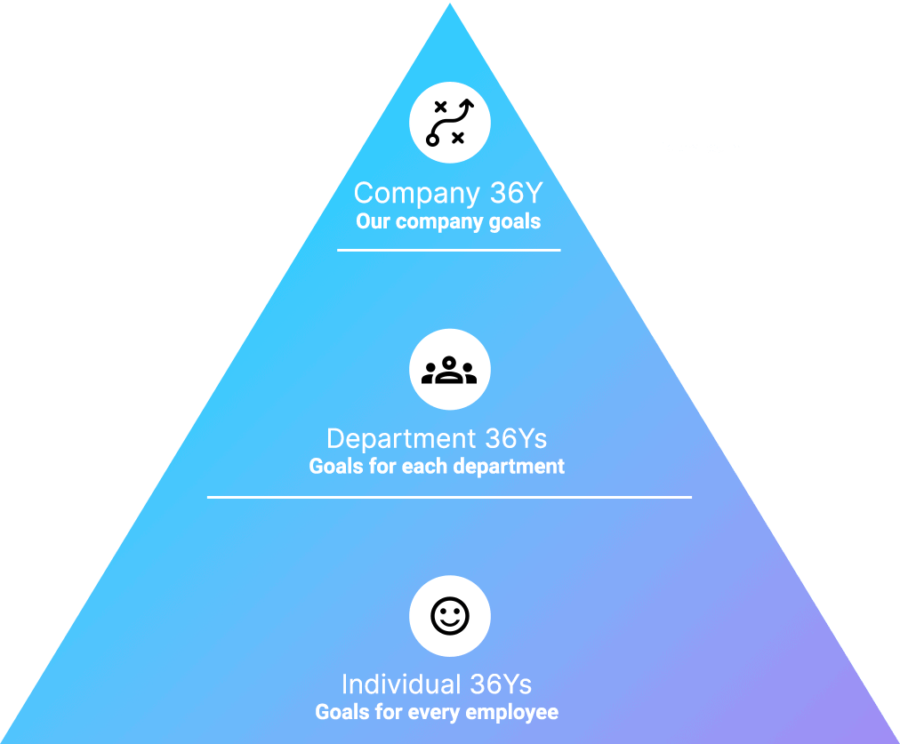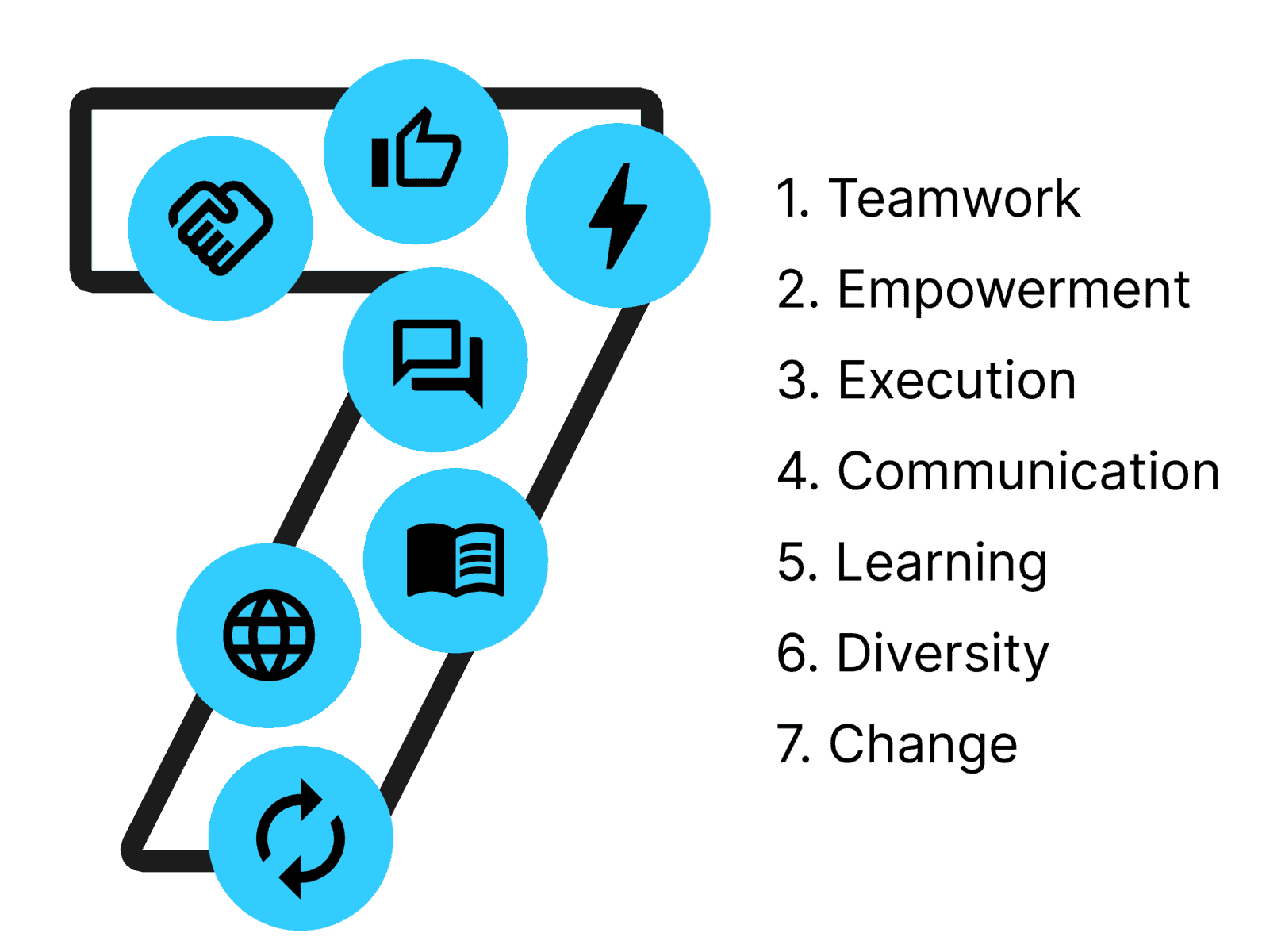Ops in a Box
Open-Source People Ops Tools for Companies That Want to be Great Places to Work
Ops in a Box
Open-Source People Ops Tools for Companies That Want to be Great Places to Work
Ops in a Box is EveryMundo’s Core Operational Frameworks & Processes
At EveryMundo, we apply five key frameworks in the pursuit and execution of our Company strategy — to remain the global leader in travel marketing technology. To excel in that pursuit requires total alignment:
- Departmental and individual goals must align with our Company strategy
- Individual roles and responsibilities must be aligned to those goals
- Managers must align behind specific responsibilities for team member development and well-being
- All employees must align behind our Company values through their individual actions
- And we need a way to check ourselves against all of the above
This is Ops in a Box – we’ve open-sourced it for your reference.
Whether you are a startup with three employees or a mid-sized company in need of more operational focus, these frameworks are designed to help you improve alignment and team member engagement.
EveryMundo’s 5 Frameworks:
- The 36Y: Aligned goals and results we intend to achieve in 1 year’s time
- Job Banding: Aligned individual roles and responsibilities in pursuit of those goals
- The Employee Bill of Rights: Aligned managerial accountability for individual development
- The Values & Actions: Aligned company values and individual behavioral norms
- The Feedback & Alignment Program: A program to check ourselves against all of the above
Goal setting with the 36Y
36Y is a set of goals to be achieved in the next 3 months (the 3), 6 months (the 6), and by year’s end (the Y).
There are three goal levels, each one nested below the other:
- Company 36Y – Our Company Goals
- Departmental 36Ys – Goals for Every Department
- Individual 36Ys – Goals for every team member
Company Goals are determined by leadership and reflect our ambitions as a company.
Department Leads identify departmental contributions to the Company Goals – the “Department 36Y”. They define how their departments will help meet Company Y-goals by the end of the year, and Company 3 and 6-goals each quarter.
Individual goals nest under those departmental goals – the “Individual 36Y”.
This structure aligns each of us behind our highest priority activities. We track results against our Y goals every quarter and monitor progress regularly.

Tracking Goals
All goals live in our task and ticket management platform (JIRA). Teams meet bi-weekly to review progress against their 36Ys – department and individual.
This ensures visibility of goals and tracks goal progress across the company and creates a feedback loop: understanding our progress in real-time improves our ability to re-prioritize and make adjustments on the fly.
Each Company goal has an owner – an appropriate EM Lead with 3 core duties:
- Check department 36Ys each quarter, offer any feedback, and address questions.
- Track goal progress, course correct, discuss potential re-prioritization.
- Help the Executive team determine our Company 3 and 6-goals every quarter.
Job Banding
This framework aligns roles of similar levels of responsibility and impact into one of six “job bands”. The higher the band, the more autonomy, accountability, and/or work across departments.
Banding is fundamental to EM’s org structure. With it, we can:
- Group jobs with comparable skills, responsibilities, and requirements.
- Level roles across a common framework to provide clarity about the scope, impact, complexity, and experience needed within each band.
- Codify role-appropriate expectations for employees, while providing a method to gauge individual performance.
Mapping career paths via the Band Framework
Bands underscore what employees must achieve to advance in their careers with us. This clarity creates potential, alternative career paths for everyone in the Company. Team members can navigate their career paths vertically or horizontally – moving up a band or transitioning into another department at the same band.
Three Tiers, Two Bands per Tier:
- Operational Tier – Bands 1 and 2: Roles within these bands are developing their expertise, and mastering skills within their functions and require ongoing support from more senior team members
- Hybrid Tier – Bands 3 and 4: Positions in these bands are contributing to areas outside of their assigned scope as well as leading projects / participating in business key decisions
- Strategic Tier – Bands 5 and 6: The company’s most senior roles, whose primary role and function center around strategy and long-term results
Having two Bands per Tier enables incremental career growth before a substantial increase in role and responsibility.
Pillars: Categories to articulate the criteria for each Band
- Goals and Results: level of achievement and expected outcomes, including toward 36Y
- Responsibilities and Impact: level of accountability, autonomy, influence, and contribution
- Processes and Policies: ownership of processes and policies; contribution to the development of processes and policies
- Resource Planning and Hiring: level of support and/or responsibility in hiring activities; participation in resource planning activities
- Growth and Development: level of responsibility towards learning, growth of skills, and development initiatives for yourself and others in the company
The table shows the band descriptions for the Goals and Results pillar.
The Employee Bill of Rights
The Employee Bill of Rights (BoR) defines how managers stay accountable for their team members. These 8 rights support individual engagement and career advancement. It is our rule of thumb for all managers – no matter their department.
While others are often involved in the administration of a certain right, the manager listed on the Bill of Rights is the accountable party. A team might be tasked with contributing to one person’s onboarding, but his/her manager is accountable for ensuring that this process occurs successfully.
Two Categories of Rights
1. Rights supported by internal processes & frameworks:
- Providing guidance on individual 36Ys, our Goal Setting Framework
- Offering individual feedback on alignment with our values and bands
2. Rights about our awareness and empathy as leaders:
- Maintaining awareness for the well-being and motivation of your team
- Ensuring team member recognition
A Manager’s Role:
- A Manager is accountable for ensuring the execution of a team member’s BoR.
- A Manager is accountable for communicating the BoR to new team members.
- A Manager is accountable for communicating any changes affecting a team member’s BoR.
Since the BoR defines what it means to manage, we can assess managerial capacity. Questions about reporting structure must always come back to the BoR:
- Is this manager in a position to be accountable to uphold another person’s BoR card?
- Is this manager stretched too thin and/or not ideally suited to be accountable for certain rights and we should consider alternative solutions?
Values and Actions
At the foundation of EveryMundo is an agreed-upon set of 7 shared values. Our values are not a philosophy – they are defined and demonstrated by our actions. Our values define our expectations for working with each other and our customers.
The Values: 7 words that encapsulate what it means to be a team member.
The Actions: Illustrations that reflect our values in terms of behaviors – we control these things at the individual level.
We introduced the “Actions” and cut our list of values in half. Why?
- We needed a consistent understanding of our values
- We needed clarity about our values as we grew as a Company while working remotely
- We wanted to hold ourselves accountable for upholding our values (the F&AP)

Values & Actions Example: TEAMWORK
Value Definition: Cooperative or coordinated effort on the part of a group acting together as a team or in the interests of a common cause
- Action 1: We maintain empathy when interacting with other employees and trust that our teammates are working hard and towards a common goal.
- Action 2: We step up when times are tough and when we are needed to help solve an issue; we rally around opportunities for success.
- Action 3: We devote time and attention to the opinions and thoughts of others.
- Action 4: We regard the Company as one team and consider ways we can support other departments.
Feedback & Alignment Program
What do we mean by alignment?
- Alignment with our Company values
- Alignment with our jobs/bands
- Alignment with the Bill of Rights (for managers)
In an effort to hold ourselves accountable while facilitating individual learning and development, we encourage feedback against these three frameworks. Aligning behind our values through individual actions (behaviors) promotes growth and development – and it’s good for the Company.
After we tied values to individual actions, it became clear that we could hold ourselves accountable – they have become the basis for direct report feedback.
The Feedback & Alignment Program provides guidance on professional development and alignment with one’s band and our values. We use our frameworks – the Values & Actions, Job Banding, and Bill of Rights (BoR) in order to evaluate alignment:
- Managers give feedback on development opportunities based on alignment with role (Bands) and behavior (Values & Actions)
- Employees give Managers feedback on alignment with managerial responsibilities (BoR)
- All employees self-assess alignment and growth opportunities based on the 3 frameworks
The Result: A short-term development and alignment plan for each employee
Self-Assessment
- Space to self-reflect on actions & values, individual contributions, and interests
- Completed by everyone as a first step
- Direct reports send to their managers
Manager to Direct Report
- Feedback on alignment with values and the direct report’s role/band
- Completed by all managers, shared with direct reports to guide development and improve alignment for each employee
Direct Report to Manager
- Feedback for Managers on their alignment with the Bill of Rights.
- Completed by all employees and collected by People Ops.
- The Result: Managerial development, training, and support
Connecting Job Bands to Direct Report Feedback
Like aligning to our values through actions, individuals can align with their bands by upholding the pillars within their given band. Example:
- According to the Banding Framework, with respect to the growth and development pillar, a Band 2 should be supporting the training of new hires.
- The manager of this individual can evaluate the extent to which this is occurring and provide suggestions for improved alignment.
- When providing feedback, the manager can refer to the Band 3 description to determine what the direct report can do towards a future promotion.
Connecting the Bill of Rights with Managerial Feedback & Development
- Operations supports managerial development and training by understanding which rights our managers need guidance to administer.
- We are using that feedback to jumpstart managerial development opportunities for all managers.
